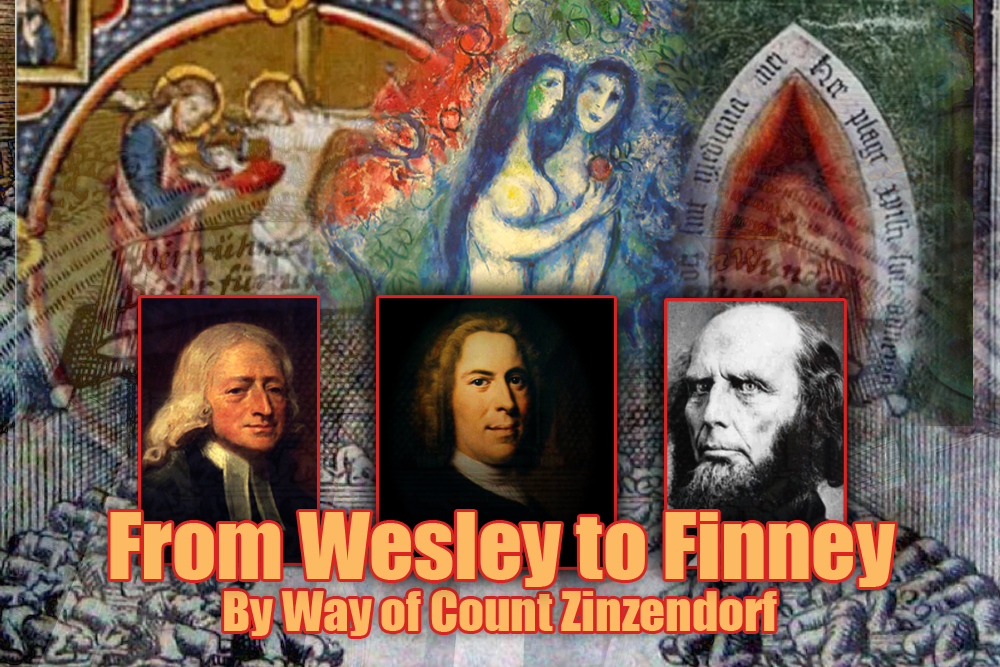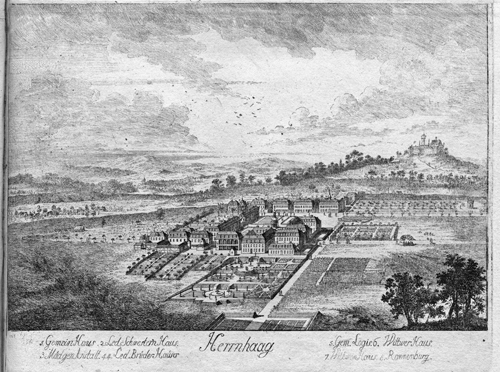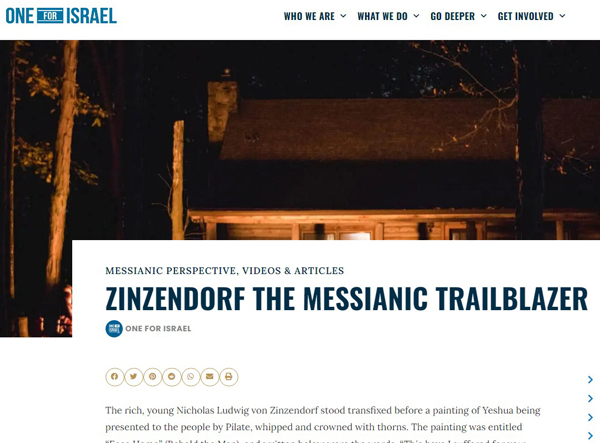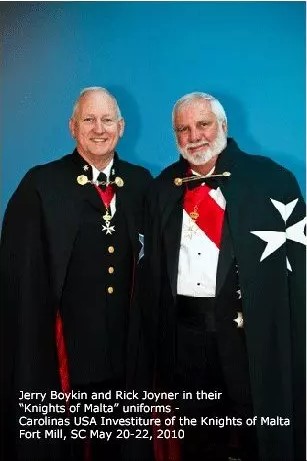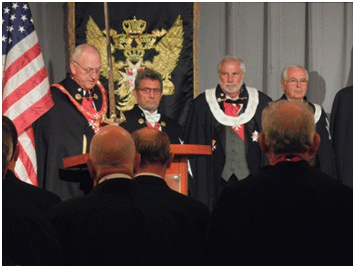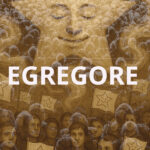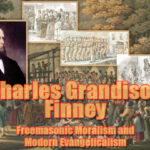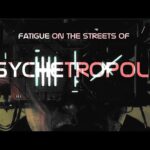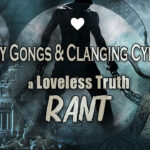
We’re told that on May 24, 1738, at a meeting composed largely of Moravians in Aldersgate Street, London, John Wesley (1703 – 1791) felt his intellectual faith transformed into a personal, born-again experience. Now, I don’t doubt that Wesley had some kind of experience, but given his practices, associations, and some shocking statements he made later in life, I don’t believe they came from the Holy Spirit.
We’ve already gone into quite a bit about Wesley, but given the great influence he and the other revivalists had on Christianity—especially in context of the broader deception secret societies have woven into the church, science, politics, and finance—we’re going to delve a little deeper.
We’ll look at John Wesley’s statements, the Wesley brothers’ “Holy Club,” and particularly the Moravians and their leader Count Zinzendorf. We’ll consider Zinzendorf’s Secret Society membership, his kabbalist doctrines, and sexual perversions that have been blotted out of official church history.
Let’s dive right into John Wesley’s words in a letter to his brother in June 1766. (You can look this up for yourself on sermonaudio.com). Wesley would have been in his sixties when he wrote this.
“In one of my last [letters] I was saying that I do not feel the wrath of God abiding on me; nor can I believe it does. And yet (this is the mystery), I do not love God. I never did. Therefore I never believed, in the Christian sense of the word. Therefore I am only an honest heathen…
And yet, to be so employed of God! And so hedged in that I can neither get forward nor backward! Surely there was never such an instance before, from the beginning of the world! If I ever have had that faith, it would not be so strange. But I never had any other evidence of the eternal or invisible world than I have now; and that is none at all, unless such as faintly shines from reason’s glimmering ray. I have no direct witness (I do not say, that I am a child of God, but) of anything invisible or eternal.
And yet I dare not preach otherwise than I do, either concerning faith, or love, or justification, or perfection. And yet I find rather an increase than a decrease of zeal for the whole work of God and every part of it. I am borne along, I know not how, that I can’t stand still. I want all the world to come to what I do not know.”
– Quoted in Stephen Tomkins, John Wesley, A Biography [Oxford: Lion Publishing, 2003], p. 168; italics mine),
Please stop for a minute and let that sink in. The highly esteemed John Wesley who preached some 40,000 sermons throughout his life; the John Wesley who has had an incalculable effect on modern “Christianity” confides to his brother in his later years that not only has he never loved God, but the only belief in eternity and the spiritual realm he has “faintly shines from REASON’S glimmering ray.”
What bewilders me is how countless seminary students either missed or brushed right past this. Were they so hyper-focused on studying the nuances of his sermons to look smart for their professor… or what…? I have the same question about ALL the revivalists. I mean, these men are straight-up REVERED to the point that you dare not criticize them for fear of being ostracized, yet no one seems to be interested in who they really were.
With that out of my system, let’s talk for a minute about “reason’s glimmering ray.”
Enlightenment thought originated in Greek Philosophy, right? But are you aware that Greek Philosophy came from Mystery School wisdom? We’ll be taking a closer look at how that all came about in another part of the series, but for now:
The Age of Reason = The Age of Mystery School Enlightenment
The Reformation put God’s Word back into the hands of the common man. But, not to be thwarted, the enemy was right there puffing up man’s pride with scholarly education and creating a church model that wasn’t terribly different from Roman Catholicism; with a university educated man teaching the laymen. That’s very different than making a diligent, Spirit-led study of scripture and leading others to do the same. Because it doesn’t matter how many scriptures men tear apart and paste back together again using their scholastically–educated brain, they accomplish exactly nothing for the kingdom without the leading of God’s Holy Spirit. Their efforts are carnal, futile.
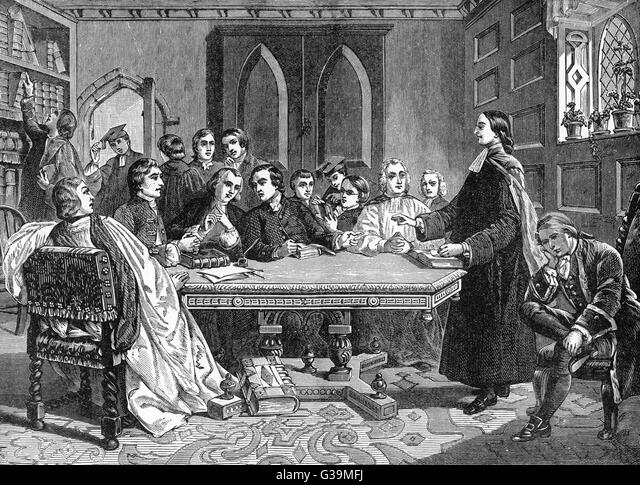
The Holy Club & A Quick Review of Secret Societies
I mentioned previously that Whitefield & Wesley were members of a fraternity at Oxford University organized by the Wesley brothers that was mockingly referred to by names like “Bible Moths,” “Sacramentarians,” and popularly; “The Holy Club”– because members were considered to be fanatical.
Lesser known, but also significant members of the Holy Club were revivalist Benjamin Ingham – who led a colonial mission in America where he developed an interest in the Moravian church, and John Gambold – a quietist who was captivated by the mysticism of the Greek Fathers. Gambold later became a Moravian bishop. So, we start to see the significance of the Moravians, which we’ll get to in a minute. (The same is true of the Puritans overall but we’ll leave that for another time).
The unity of the above mentioned men was unlikely because they held such diverse beliefs. You can call them the first Ecumenicals and sing “unity,” “kumbaya,” or whatever, but combined with other things, like the mental breakdown and untimely death of member William Morgan (not the William Morgan who was murdered by the Freemasons) and the continued acceptance by group member Thomas Blair after he was convicted of sodomy, the club had all the familiar earmarks of a secret society.
We know that secret societies like Freemasons, Jesuits, Rosicrucians have worked behind the scenes of governments and religions throughout history to socially engineer society into embracing the Ancient Mystery School Teachings in their various forms.
The secret society we’re most familiar with today is Freemasonry, (also founded in the early 1700s). Freemasonry’s foundation in Mystery School teachings was openly stated by 33° Mason and Sovereign Grand Commander of Universal Freemasonry Albert Pike. He writes in Morals and Dogma,
“Masonry is identical to the Ancient Mysteries.”
Pike further called Freemasonry the “Mystery of the Kabbalah,” writing that;
“The old primitive faith that is the Freemasonry religion is derived from the Ancient, pure Kabbalah.”
Kabbalah is esoteric Jewish mysticism; an occult system of magic and witchcraft. Its teachings were put into writing in the second-century by rabbi Simeon Bar Yochai, the Zohar being its source book.
“The Zohar (Book of Splendor) is the seminal text of Kabbalah. It is traditionally ascribed to the second-century Talmudic master Rabbi Shimon bar Yochai, although modern scholars date it to Moses de Leon of thirteenth-century Spain.
While Kabbalah was taught and studied especially in the thirteenth century, it had a particular resurgence in the sixteenth century, at the time of Yosef Caro.” – The Jewish Chronicle
“Kabbalah” means “received teachings” or “traditions.” The story is told of Simeon Bar Yochai receiving the teachings in a cave where he was visited by angelic beings… Kind of reminds me of Joseph Smith’s story… But the mystical teachings of Kabbalah are Hermeticism; the Alchemical teachings of Hermes Tresmegistus. From Wikipedia,
(“Hermes the Thrice-Greatest”) is a legendary Hellenistic period figure that originated as a syncretic combination of the Greek god Hermes and the Egyptian [demon-]god Thoth.” – Wikipedia
The same principles were likely prevalent before Noah’s flood, because they are the religion of the god of this world which stands in direct opposition to the truth of God and His Christ. So, don’t let all the names confuse you. When we’re talking about Hermetecism – the root of Kabbalah and Secret Societies – we’re talking about Witchcraft.
The big letter “G” in Masonry represents Gnosis (knowledge). The enemy’s religion is all about the ascension of man without the aid of God; achieving godhood through the pursuit of knowledge and occult practice.

Nikolaus Ludwig, Count von Zinzendorf (1700 – 1760); The Count of Questionable Conduct
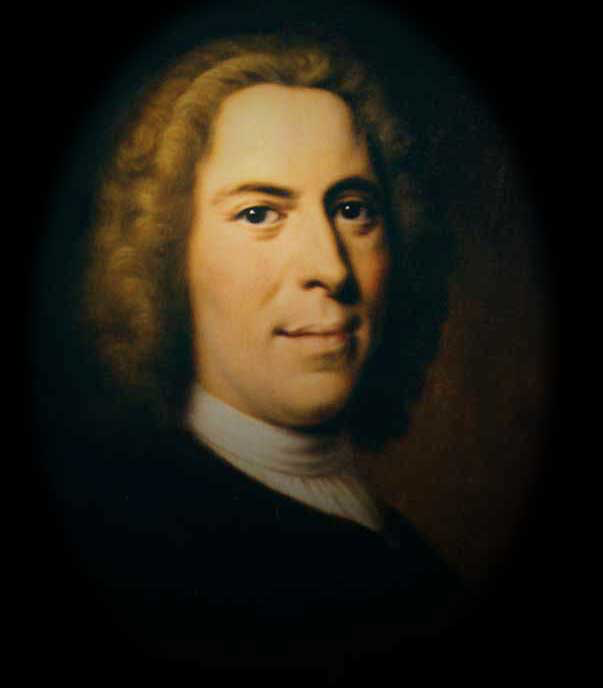
Wealthy member of European nobility Count Nikolaus Ludwig von Zinzendorf was a contemporary of Whitefield, Edwards and Wesley and was the leader of the Moravians who John Wesley spent considerable time with in Europe.
Now, like all these other guys, official church history champions Zinzendorf and the Moravian Revival in a small town in East Germany (Herrnhutt) for its prayer and missions movement. Here’s an example on the website A Yearning Heart’s Journey celebrating “Zinzendorf’s Legacy.“
“Among the Pietists, Zinzendorf is seen as a bit of a hero, and is given much credit for the way in which he helped shape the Pietistic tradition; some historians have even called Zinzendorf “The Conqueror of Pietism,” because of the mark he left in its history, as well as the way in which he gave it a distinctly new direction. Zinzendorf brought many creative innovations into the church during his time, including: his focus on Christian unity; the emphasis on community singing; the use of casting of lots for decision making; the familial approach to spirituality and community (as opposed to the monastic tradition); his holistic understanding of Christian life and experience (also called “religion of the heart”); and the idea of having a prayer chain of day and night prayer (which had been a totally new concept for the protestant movement, although not for Christianity in general).
For Zinzendorf, the Moravian community and the beautiful, unique settlement of Herrnhut, were, by far, his greatest achievements. The Lord used Zinzendorf and Herrnhut to restore the Moravian beliefs, traditions, and culture. Also, Zinzendorf was used to establish new concepts within the Church that would eventually lead to world mission and so change many lives and the face of planet earth for ever.” – AYHJ (bold added)
For starters, piety is a Roman Catholic mantra, focused on man achieving godliness through religious ritual.
Anyway, the self-proclaimed Apostles and Prophets of the New Apostolic Reformation (NAR) are fascinated with Zinzendorf and the Moravians. Inspired by a “prophecy,” Rick Joyner bought 320 acres near Moravian Falls, NC in 1997 and moved the headquarters of MorningStar Fellowship there from Charlotte. Moravian Falls is the land where the Moravians settled in America in 1753.
I wasn’t able to find the original again, but here’s a clip that Laura of Magical Mystery Church captured of Rick Joyner praising the Moravians and Count Zinzendorf:

Joyner and his group are attributing all kinds of mystical traits to the area, making it a “Christian Sedona” of sorts. Laura points out this quote by false teacher John Paul Jackson,
“Divine portals into the heavenly realm exist around the Earth today. The city of Jerusalem is a portal. In fact, it is the major portal on the face of the Earth. That’s why both David and Isaiah said that Jerusalem is the center of the earth. Why do you suppose the enemy is trying to capture Jerusalem? He is trying to block or close off this portal.
In Moravian Falls, North Carolina, Rick Joyner has shared that he and his staff have had numerous angelic visitations [there’s the visiting angels thing again] on their property that was once owned by Count von Zinzendorf and the Moravian community of faith. Several portals exist on this land which had been prayed over by the Moravian brethren for over 100 years.” John Paul Jackson
These words should put a check in the spirit of any discerning believer.
Ex-NAR member, researcher and author Mishel McCumber has worked extensively to expose the NAR, including their leaders’ fascination with Zinzendorf and the Moravians. In her article The Hidden Agenda of The Order of the Mustard Seed, she examines this secret society that was created by Zinzendorf and how it is being resurrected by the NAR today.

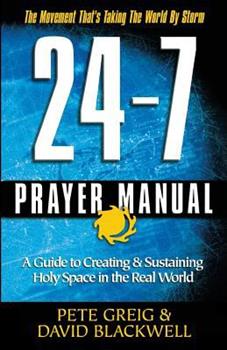
“Peter Grieg of the 24-7 Prayer Movement, an international, ecumenical movement laced with Gnostic, New-Age, and Contemplative spirituality, is reviving the 17th century mystical Masonic Order of the Mustard Seed. Recruited members are required to take a life-long vow of commitment to the Order and the outward sign of this commitment is to be symbolized with a ring or tattoo. The Order of the Mustard Seed was originally a secret order started by Count Nikolaus Ludwig von Zinzendorf and is listed in “The History of Freemasonry” by Albert G Mackey as being a long dormant Masonic Order. Greig claims he was inspired to resurrect the order by the 18th century Moravian renewal and the life of Count Zinzendorf. Understanding the significance of the resurrection of this order and of the overall resurgence in the interest in Zinzendorf is key to understanding the state of the apostate church and where it’s headed.” – Deception Bytes

(Greig stepped down in 2019 and was replaced by Mike Andrea who resigned after allegations that included psychological, sexual, spiritual and financial abuses.)
Zinzendorf was a nobleman who had been brought up in the traditions of Pietistic Lutheranism. But McCumber examines his secret society affiliations,
“Zinzendorf was a Rosicrucian. In late medieval Germany, the Rosicrucian’s were a secret society of mystics holding a doctrine built on esoteric truths, and “secret doctrines” of the ancient past. They believed that these secret mystical truths were concealed from the average man, and reserved for an elite few. Much like today’s New Apostolic Reformers, these mystics sought a universal Reformation of Mankind. Many modern esoteric orders and secret societies are said to draw in part or in whole on the Rosicrucian’s philosophies. Zinzendorf was head of the Rose Croix (Rosicrucian) from 1744-1749. In fact Masonic dictionaries list a category called Moravian Masonry which was founded in 1939 called the Confraternity of Moravian Brothers of the Order of the Religious Freemasons… Although [like today’s Dominionists] he sought to build a Kingdom on earth, it most certainly had nothing to do with the God of the Bible.” – Deception Bytes
Moravians History
The history of the Moravians is a little confusing because we first read about them in relation to the (Pietist) martyr John Huss and the Bohemian Brethren in the 1400s. They were known to be the first Reformers, predating Martin Luther. Their name came about as Bohemian Brethren exiles fled from Moravia to Saxony in 1722 to escape the Counter-Reformation and established the Christian community of Herrnhut. (This is why the Moravians are also known in German as the Herrnhuter Brüdergemeine, translated; “Unity of Brethren of Herrnhut”). McCumber explains;
“The Moravians were a Gnostic sect that was founded in 1457 in what is today’s Czech Republic. They were an offshoot of the Bohemian Brethren, but in 1467 they constituted themselves a church, thereby severing themselves from their association with the National Bohemian Church…
[M]erciless persecution by the Catholics extinguished most of the Protestants in Bohemia and completely wiped out the Moravians in Bohemia. However, a few of the Moravian families held on in the region of Moravia. In 1722, they left their homes, land and belongings and journeyed to Germany in search of religious freedom. By invitation they settled on the estate of Count Ludwig Von Zinzendorf and eventually built a town there called Herrnhut.” – Deception Bytes
I’m sure someone will chime in and cite Wesley’s letter detailing the reasons he eventually left the Moravians. That is true. But like I’ve shown in other articles and my recent video, there are plenty of other problems with him, including the letter to his brother we started out with. And while Wesley’s letter does address the Moravian’s interest in the Mystics, it completely neglects to mention their much darker practices.
In her article Examining Count Nikolaus Ludwig von Zinzendorg 1700-1760, McCumber exposes some of these darker practices that have been completely omitted by Joyner and modern day Evangelicals.
“Zinzendorf was a sexual deviant who exacted totalitarian control over the sex lives of his followers. He believed that human sexual union symbolized the mystical marriage between Christ and his Church—the believer and the Divine. The act of copulation became so elevated in his community that he referred to it as a “sacrament” and viewed it as a liturgical act (Peucker 31). Zinzendorf gave explicit instructions to all couples regarding the act of copulation, its frequencies and the various positions available to them. There were regular conjugal laws established and these were observed by all members of the sect. Certain hours and quarters were set up for these matters and meetings known as love-feasts ended with couples making love in full view of other parishioners (Lachman 59).
Zinzendorf considered himself Chief Deputy of Christ on earth, and “adjusted” marriages by making couples switch partners whenever it so pleased him. Sometimes “mass adjustments” were performed, and young girls and boys were forced together and made to perform difficile copulation astride wooden benches (O’Neill 107; Lachman 59).” – Deception Bytes (bold added)
The website Scribal Well has more about these “love feasts.”
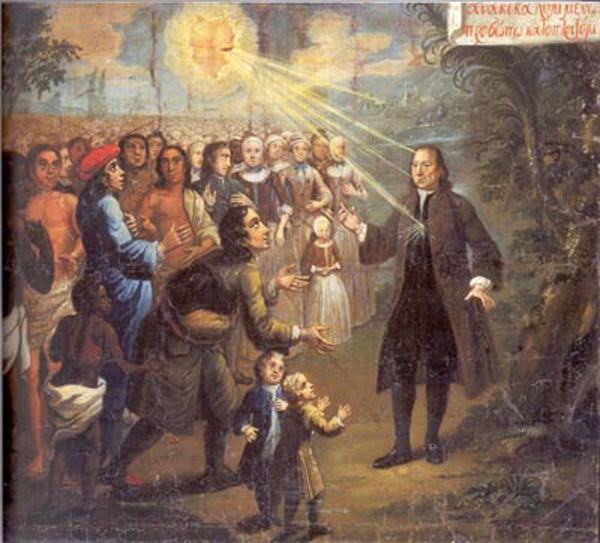
(There are Kabbalistic elements to this painting if you know what to look for)
“At the Fetter Lane Chapel [founded in London in 1742 by Moravian Church members who’d come to London in search of passage to the British colonies in the Caribbean], the Moravians spoke openly about their sex lives and were advised by Zinzendorf and his agents on how to improve it, how the women could achieve ecstasy more easily and satisfactorily, and how the men could perform their spiritual labors with greater perseverance. The meetings, often known as “love feasts,” seem to have included couples making love in view of the other parishioners, and the singing, dancing, and general joyous exultation of the senses – necessary in order to fully appreciate the human nature of Christ – may have ended in a communal unification of the opposites.” – Scribal Well <–excellent article with links to more information
God’s condemnation of the same obscene corruption is recorded in the book of Revelation where Jesus states to the church at Ephesus:
“You hate the practices of the Nicolaitans, which I also hate.” (Rev 2:6)
The Nicolaites of the first century were known for their “unrestrained indulgence,” and were notorious for defiling an early Christian ceremony known as an “Agape,” which translates “love feast.”
Sex Magic
This all leads us to the subject of occult sex magic which was practiced by Gnostics and Kabbalists. In the article Top 10 ‘Sex-Magic’ Cults, the website Syncromystic explains the beliefs behind the practice.
“'[O]ne of the most influential forces in the rise of modern sexual magic was the complex body of texts and traditions that make up Jewish Kabbalah. …Erotic symbolism is pervasive throughout Kabbalistic literature…’
Rabbi Moses de Léon, probable author of the major Kabbalistic text known as the Sefer Zohar (or, “Book of Splendor”) was “…a disciple of …‘Gnostic’ kabbalists…” who were preoccupied [with] “…the world of the demonic …[and] with the sexual mysteries… [the alchemical] mysterium coniunctionis …[that] lies at the very heart of the Zoharic teaching.
A kabbalistic variation on the sacred-marriage theme was further developed in the anonymous, but highly influential, treatise titled Iggeret Ha-Kodesh (or, the “Holy Epistle”).
The word Kabbalah itself signifies “tradition.” Specifically, we’re talking about a mystical tradition in which “sexual relations between a husband and wife were seen to replicate the union between [the] Shekinah and God.” In Kabbalistic sex, “…the woman represents and to some extent becomes Shekhinah [sic],” while her male partner identifies with masculine aspects of divinity.
The dictionary definition of “Shekinah” is the “glory of the divine presence.” In Kabbalistic circles, it is linked with another concept, Malkhut, and it is construed as the “feminine aspect of God” – something like the Jewish version of the “goddess…”
[You see sex magic in occult practice throughout history in various places. Another example is the Eleusinian Mysteries which all the Greek Philosophers except Socrates participated in. How could anyone condone this being practiced in the name of Christianity?]
The Moravian Connection [<–!]
Allegedly, [Kabbalist/Sabbatean Jacob Frank (1726–1791)] had contact with – and may have been partially funded by – a group of Protestants known as Moravians…
Dusting off a teaching reminiscent of Nicolaism, Zinzendorf made “…sex into such an important act that Moravians referred to it as a ‘sacrament.’”
Zinzendorf also borrowed from the language of some “[m]edieval mystics …[and] held that sex …both symbolized and reenacted the unification of Christ and his bride, the church…”
Married Moravians were – somewhat unbelievably – supposed to have sex “…while focusing on their union with Christ…”
Zinzendorf appears also to have believed and taught that, since males are part of the church, and the church is the “Bride of Christ,” males must somehow eventually become female. This queer notion initially issued in “homoerotic …liturgical language.”
Speaking of redefining marital relations, 18th-c. Swedish mystic Emanuel Swedenborg came to believe that Conjugal Love (the title of his 1768 book) bordered on the liturgical. It seems relevant that, while he lived in London, Swedenborg associated with a group of English Moravians…
[I]t has long been assumed that Swedenborg was influenced by erotic Kabbalism.” – Syncromystic (bold added)- Full video: here
The article above and linked video explain that, in occult lore, the original human was a “composite” entity. In other words, the male Adam and female Eve were formed from one original hermaphroditic “Adam Kadmon.” Occult tradition maintains that the correct recombination of the “sacred” male and female “energies” is held by some occultists to create a “divine child;” a conjunction of opposites (the Hermetic principle again). We see this represented by the “Star of David” and the right triangle in Freemasonry. The Tetragrammaton is a symbol representing the sexual combination of male and female divine energies. (source – Syncromystic)
Another contemporary of Zinzendorf was Sabbatean Jacob Frank (mentioned above). The Frankists joined Freemasonry and, given their interest in Alchemy, they were in all likelihood members of the Rosicrucians.
“Gershom Scholem specifically mentioned the Frankists and Rosicrucians got along well; and though Jews at the time weren’t exactly welcomed into regular Freemasonry, the Rosicrucians can be expected to have actively sought Jewish initiates.” – Conspiracy Archive
Jacob Frank pimped his beautiful wife to recruit influential men(!) Pimping, blackmail and pedophilia, as well as human sacrifice, are age-old rituals held for entry into Satanic organizations.
I also came across this article by researcher David Livingstone on his website Ordo ab Chao,
“Zinzendorf then adopted the antinomianism [lawlessness] of the Frankists by elaborating Kabbalistic sex rites into bizarre Christian teachings. According to the Kabbalistic theories of Zinzendorf, God and the universe are comprised sexual potencies, the Sephiroth of the Kabbalah, which interact with each other and produce orgasmic joy when in perfect equilibrium, recalling the union of the cherubim in the Holy of Holies. Kabbalists claimed that the cherubim were embraced in the act of intercourse, symbolizing God’s union with the Shekhinah. After the destruction of the Temple, the reunion of the cherubim depends on ritual intercourse between Kabbalist and his wife…” – Ordo Ab Chao
Notably, the Wesley brothers and George Whitefield are mentioned in the same article.
“In 1738, Peter Boehler, the London Moravian leader, and his followers established the Fetter Lane Society in London, the first flowering of the Moravian Church in England. Following their practice in Germany, they had a custom of fellowshipping at a common meal, or a “love feast,” prior to taking communion. Most of their members were Anglicans, most prominently John Wesley (1703 – 1791), his brother Charles Wesley (1707 – 1788), and George Whitefield (1714 – 1770).” – Ordo Ab Chao
All the above, especially the earlier references to the involvement of children in these sick practices makes Whitefield’s insisted control of his boy’s home, and the Trustees’ concern (mentioned in my article about Whitefield) even more disturbing. From my article,
“Whitefield ‘insisted on sole control of the orphanage.’ He refused to give the Trustees a financial accounting. The Trustees also objected to Whitefield’s using ‘a wrong Method’ to control the children, who ‘are often kept praying and crying all the Night.’” – People Pill
I mentioned that Whitefield’s boy’s home was a replica of August Hermann Francke’s University of Halle.
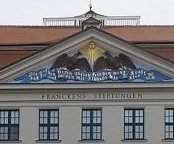
Herrnhut (home of the Moravian community) was also initially intended to be a replica of the University, with an orphanage and paedogogium (providing children of nobility and the wealthy with “the comprehensive education needed for their later duties in society”). Zinzendorf attended Paedagogium at Halle at age ten.
A Personal Note on Moravians, Herrnhuter Brüdergemeine and Lutheran Pietism
The Moravians are popularly held to have emerged from Lutheranism. But that notion is the likely result of Zinzendorf’s Lutheran Pietist upbringing. I hope you’ll bear with me as I go on a bit of a personal tangent for a minute here. As some of you know, I was born in Germany, my mother having lived through the horrors of WWII as a child. Her father, a Lutheran pastor, was killed for speaking out against Hitler. A link to her book of childhood stories is in the sidebar of my website. But of all the things mom has talked about over the years; bombs, death, hunger, always the hunger… by far her most nightmarish experience was the two years she spent at a boarding school in Gnadau from age 14-16. Even though those were the only two years when she had food in her stomach, she refers to the school as a “hell hole.” The teachers were cruel. Never a kind word was spoken. One classmate even committed suicide, something that mom, and she’s sure other students also contemplated. I’ve heard the stories countless times, always with an emphasis on her silent protest during chapel prayer each morning: “That’s not MY GOD!” The name of the organization that ran the school?: Herrnhuter Brüdergemeine. It turns out “Hernnhuter Brüdergemeine” is what the Moravians referred to themselves as in Germany. My grandmother sent my mother there because it was reputed as a “Eine gute, Christliche schulle” (a good Christian school). I was more than surprised to learn that, although there’ve been significant administrative changes and I have no reason to think that the sexual deviancy we’ve explored took place there, the school remains to this day — and it’s still run by the Moravians.
Anyway… the Moravian practices get darker yet…
Blood-and-Wounds Theology
Researcher/author Paul Peucker, referenced by McCumber, wrote about a time in Moravian history known as the “Sifting” in his book Time of Sifting – Mystical Marriage and the Crisis of Moravian Piety in the Eighteenth Century. The summary explains why minimal historical accounts remain of Zinzendorf’s lascivious teachings.
“In early 1749… some influential members carried Zinzendorf’s “innovative theology” into a territory he allegedly called “Sifting” after Luke 22:31-“Satan has desired to have you, that he may sift you as wheat…” Since then, historians of the Moravian Church have skirted the subject as irrelevant or embarrassing. Religious practices of this said “Sifting” focused on Zinzendorf’s “Blood-and-Wounds” theology. In the aftermath of this period, Moravian leaders tried to destroy any sources documenting Sifting practices. Destruction of these sources is an important part of the story of Zinzendorf and the Moravians. Zinzendorf’s theology encouraged “worship of Christ’s wounds” as sources of nurture and bridal union with Christ, whereby the believer’s feminine soul (“die Seele” in German) joined mystically with Christ as bridegroom…
In A Time of Sifting, Paul Peucker provides the first book-length, in-depth look at the Sifting Time and argues that it did not consist of an extreme form of blood-and-wounds devotion, as is often assumed. Rather, the Sifting Time occurred when Moravians began to believe that the union with Christ could be experienced not only during marital intercourse but during extramarital sex as well.” (Summary A Time of Sifting: Mystical Marriage and the Crisis of Moravian Piety in the Eighteenth Century By Paul Peucker. Abridged)
From Peucker’s book,
“Zinzendorf considered his teaching on marriage and sexuality the central point in his theology, calling it ‘a primum principium,’ ‘the root of the church tree,’ and ‘the biggest secret’ that Christ had revealed to the Moravians.” – Peucker
From professor of religious studies David Halperin’s article, Sex, the Moravians, and Rabbi Jonathan Eibeschuetz,
“Zinzendorf sought to transcend the traditional Christian aversion to sex. With Christ’s incarnation, he taught, the genital organs were no longer pudenda, “things of shame,” but verenda, ‘things to be reverenced’…
Speaking of ’embarrassing’: a feature of 18th-century Moravianism that comes across today as disturbingly kinky is its fervent worship of the vagina-like wounds of Christ, inflicted on the helpless Savior by the phallic spear.
[From the Moravian Hymnal] (‘Powerful wounds of Jesus, So moist, so gory … You are so succulent, whatever comes near becomes like wounds and flows with blood. … Soft wounds of Jesus … I crawl to you.’)” – David Halperin
We find more about Zinzendorf’s “wound worship” from Scribal Well.
“In what may appear to us, and did appear to many of Zinzendorf’s detractors, as a revolting form of spiritual sadomasochism (or the equivalent, as the term had yet to arise), Zinzendorf taught his followers to visualize Christ’s wound, from the infamous spear of Longinus, as a kind of vagina and the spear itself as a kind of phallus whose union made possible spiritual regeneration. Coupled with his own fully male sexuality, the “side hole,” as Christ’s wound came to be called, in effect transformed him into an androgynous being, an earthly manifestation of the cabalistic cosmic man, Adam Kadmon, who enjoyed the primal unity of the sexes that the cabalists, and in a different way, the spiritual alchemists, desired…
Among other practices, which included mentally kissing and licking the “side hole” in order to receive the revivifying blood, Zinzendorf urged his followers to visualize Christ’s wound as a womb and themselves as children, safe within it, but their peculiar form of erotospirituality also took less bizarre, if not less scandalous, forms. ” – Scribal Well
Dig Podcast’s, Wound Worship, “Enthusiasts and Sodomites”: A History of Radical Moravians reports how their unhealthy obsession with blood, gore and the genitals of Jesus Christ stirred up rebellion in enslaved Africans in Suriname.
“In 1750, Lutheran pastor Heinrich Melchior Muhlenberg of Philadelphia took up his pen in disgust. A bold group of missionaries had made incursions on his congregation, representing themselves as ordinary Lutherans and Calvinists. Contrary to their claims, they were preaching radical theology and persuading colonists to join their communal way of life in nearby Bethlehem, Pennsylvania. Muhlenberg could barely believe his eyes after studying their hymnology:
‘I ask you to examine the Twelfth Part of their hymns where you will discover that these obscene birds– with your permission– have compared women’s genitalia, vagina of the uterus, with the side of the Saviour of the World which on the cross has been pierced by a spear.’
Indeed these religious radicals, whom British Whig Robert Nugent called “enthusiasts and sodomites,” were making waves all over the world.” – Dig Podcast
Here’s the whole podcast. Very worth the time to listen.

Moravians hymns described their mystical marriage with Christ and His side hole in graphic language and depict necromancy. The wounds even had their own set of hymns written by Zinzendorf called the “Wounds Litany.”
“Oh, husband with a hole, O what an incomparable Ray!
Kiss us, you cold little mouth!
Oh, corpse! Spread further in this church hall.
We are lying here like the child.
Kiss us you cold little mouth.” – (Deception Bytes).
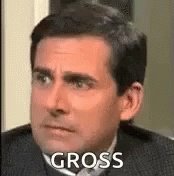
Secret Societies, Sexual Metaphysics and Ecumenism
Mishel McCumber again,
“In one of Zinzendorf’s sermons, he insists Christ is feeble-minded claiming He, has “not one more thought than was needful of Him.” In referring to Christ being tempted to turn stones to bread after His forty-day fast in the wilderness, Zinzendorf claims Christ’s answers are illogical and foolish. He further insists that Christ deemed Himself, “useless and good for nothing” and that many of the things the Lord stated in scripture are “not fit to be examined” (Lavington 29-31). Alarmingly, Zinzendorf goes as far as to tell his congregation that Christ “had nothing extraordinary in his turn of mind or gifts” (Lavington 31; Wesley 13). Furthermore, Zinzendorf states that at that cross, Jesus did not have enough intelligence to “arm himself like a great genius.” Instead, He was like, “the poorest of creatures who in their straits fall into downright convulsions” (Lavington 31-32). He further demeans Christ by calling Him their “little Jesus” and by feminizing Him as their “Little Mama Jesus” (“Candid Narrative” 39). Evidently, it would appear from such comments that Zinzendorf considered Jesus, weak, cowardly, intellectually deficient, and devoid of any talent or abilities. Consequently, by the words of his mouth, he stands opposed to orthodox Christian doctrine and thought.” – Mishel McCumber
Zinzendorf’s legacy had far reaching effects. Messianics celebrate Zinzendorf as the first Messianic Christian. Scribal Well describes the revivalist’s Ecumenical aspirations and their source.
“By the time Zinzendorf established the Fetter Lane mission (in London), he was convinced that the mysticism of the Jewish cabala – the esoteric reading of the Jewish holy books – could bring Jews and Christians as well as Catholics and Protestants together. His belief that followers of different faiths could unite in a common piety chimed in many ways with Masonic notions of universal brotherhood and a common belief in a Supreme Being, and it certainly resonated with the Rosicrucian ethos. His epiphany in Dusseldorf concerning Christ’s carnal nature seemed to prime him for cabalistic notions of what we can call “sexual metaphysics…
As in spiritual alchemy, for the cabala, in sexual union, the male and female overcome the rifts of the fallen world and achieve an ecstasy that echoes the original unity of being… God himself has sex, the cabalists believe, in the cosmic lovemaking he enjoys with his Shekinah, his female emanation. Zinzendorf Christianized this cabalistic holy marriage and declared that the Holy Spirit was feminine, the Mother of Christ…
The Moravian dogma was Spiritism which generally means Black Magic. As for their moral code, it can be summarized in the few following words of Count Zinzendorf in a dialogue with Mr. Wesley.
‘We reject all Self Denial, we trample it under Foot. We Believers do what we please, and no more.'” – Scribal Well
[Where’ve we heard that before?]
So, I don’t care if it calls itself Satanism of Kabbalah, it’s all witchcraft.
Even as Zinzendorf began his own order, Rick Joyner has created a new order at Morningstar which he has dubbed the Knights of the Cross (KOC), which literally launched modern day missions.
“Zinzendorf championed a view that is readily observed among the prophetic movement today whereby Biblical correctness and sound doctrine are de-emphasized, and emotions and experience are elevated. Whatever belief serves to bolster one’s experience, one’s happiness, is just fine, while attention to doctrinal correctness is minimized.
Unity, and an avoidance of conflict, is given higher regard than truth, or Scriptural accuracy. Zinzendorf would not have welcomed a critical examination of the Biblical soundness of his beliefs. He stressed unity among mankind, and he sought to find common ground for Catholics, Jews (the non-Messianic variety), and diverse denominations to join together.” – Scribal Well
Unlike the young pastors at the beginning of this video who I’m sure have no idea what they’re involved in, make no mistake, Joyner knows.
Again, Zinzendorf was a Rosicrucian, which, like all Secret Societies is rooted in Jewish Kabbalah and the Mystery Schools — the religion of the god of this world.. These groups idealized a coming “Golden Age” long before Darby came up with Dispensationalism or Scofield scribbled the Zionist script in his Bible margins.
This isn’t fringe history, guys. If we’re serious about shining God’s light in this increasingly dark world, we need to understand what’s happened to the Church. We need to see that Kabbalist doctrines have infiltrated Protestantism. They’ve replaced spiritual life with mystical inversions, sterile intellectual counterfeits that offer a form of godliness without the power of the Holy Spirit.. Many believe they are in Christ today, but because they lack His Spirit, they are unable to discern His Word or the times we’re living in. Until we break free from this mythoculture and its pseudoheritage, our effectiveness for His kingdom will be limited.
In any case, we simply cannot say that these men—the Revivalists—were merely “stumbling toward the light.” I mean, please search this stuff out for yourself, but everything I’ve found tells me that they were duplicitous deceivers; witches in Reformer’s robes.
Beware of false prophets, who come to you in sheep’s clothing but inwardly are ravenous wolves. (Matt 7:15)
But, wait, what’s all that got to do with Charles Finney?
Like the Moravians, Finney used music at his emotionally-charged altar calls. And,we shouldn’t be surprised that like Zinzendorf, Finney was a Secret Society member; a Master Mason. We’ll talk about him in the next article/video.
One final note: A lot of information is coming out about Kabbalah lately—but interestingly, much of it is coming from Catholic sources. That should put a check in our spirit because the Roman Catholic Church was built on Mystery School teachings—the very root of Kabbalah. It was behind the Jesuit infiltration of the Reformation that we’ve been looking at. Now, by claiming that the Reformers were Kabbalists, they’re using so-called ‘truth’ to discredit the Reformation itself. It’s the ultimate long-game False Flag. The Counter-Reformation never ended. This is False Light attacking the truth. Don’t be fooled.
I want to thank Deanne Loper and to Laura Srocki (MagicalMysteryChurch Youtube channel) for calling my attention to Mishel McCumber’s work!
God bless you, and stay watchful!
Revivals Pt1 – Asbury: Let’s Talk About Revivals
Revivals Pt2 – Enlightenment in the Land of the Plumed Serpent
Revivals Pt3 – Mystery Schools, The RCC and the Reformation
Revivals Pt4 – The First Great Awakening & The Enigmatic George Whitefield
Revivals Pt5 – The Brimstone and Mysticism of Jonathan Edwards
Revivals Pt 6 – John Wesley (1 of 2) – The Mystery School Dialectic and Christian Mysticism
Revivals Pt 7 – John Wesley (2 of 2) More Mystics & Papal Doctrines of Men
Revivals Pt8 – From Wesley to Finney By Way of Count Zinzendorf
Revivals Pt9 – Charles Grandison Finney, Freemasonic Moralism and Modern Evangelicalism
Revivals Pt10 – The Pagan “Virus“
Revivals Pt11 – The Third Great Awakening: Pentecostalism!
Revivals Pt12 – Pentecostalism Pt2: The Founders of Pentecostalism
Revivals Pt 13 – Social Justice Pt 1 – They Don’t Mix
Revivals Pt 14 – Social Justice Pt 2 – A City Upon A Hill
Revivals Pt 15 – Christ in You vs Millennialism
Revivals Pt 16 – The Counterfeit Enlightenment Pt 1
Revivals Pt 17 – The Counterfeit “Enlightenment” Pt2: The Dark Ages and Golden Age of Islam
Revivals Pt 18 – The Counterfeit “Enlightenment” Pt 3: Islam In the Bible?
Revivals Pt 20 – The Counterfeit “Enlightenment” Pt5: Placing Man Upon An Esoteric Sphere
Revivals Pt21 – The Counterfeit “Enlightenment” Pt6: The Image of the Beast
Revivals Pt22 – Crowning the Lord of the Earth: The Cosmati Pavement
Revivals Pt24 – The Great American Mythos Pt2: A Whole New Mystically Enlightened World
Revivals Pt25 – Creating the American Mythos – Christopher Columbus: The Great American Hero Pt1
Revivals Pt 26 – Christopher Columbus Pt 2 – The Namesake Goddess of a “Christian” Nation
Revivals Pt27 – The Witchcraft of Numbers
Revivals Conclusion Pt2 – What Is The Gospel?
Revivals Conclusion Pt3 – Subversion – From Revivalists to Modern Times





